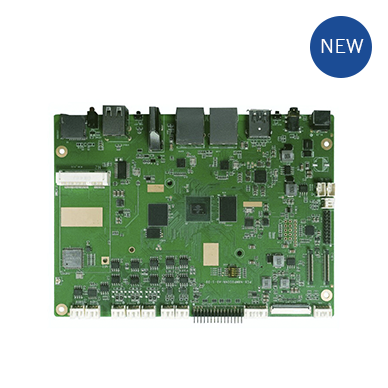Email format error
Email cannot be empty
Email already exists
6-20 characters(letters plus numbers only)
The password is inconsistent
Email format error
Email cannot be empty
Email does not exist
6-20 characters(letters plus numbers only)
The password is inconsistent


When it comes to printed circuit boards (PCBs), function and efficiency are often the primary considerations. However, some PCB designers have pushed the boundaries, transforming these functional components into intricate works of art. Custom PCB suppliers have played a crucial role in bringing these artistic visions to life, showcasing the confluence of technology and aesthetics.
The Canvas of Circuits
At first glance, a well-designed PCB may appear to be a maze of copper traces, components, and solder joints. However, upon closer inspection, these seemingly chaotic patterns reveal intricate designs and deliberate layouts that transcend mere functionality. Like a painter's canvas, the PCB surface becomes a medium for creative expression, where patterns, shapes, and negative spaces come together to form visually striking compositions.
Inspired by Nature
Many artistic PCB designs draw inspiration from the natural world, mimicking the intricate patterns found in nature. From the spiral patterns of seashells to the branching structures of trees, nature has long been a source of inspiration for artists and designers alike. Custom PCB suppliers have embraced this principle, creating PCBs that evoke organic forms and textures, blurring the line between technology and the natural world.
One notable example is the "Tree of Life" PCB, created by a talented designer who skillfully incorporated the branching structure of a tree into the layout of copper traces and components. The result is a visually stunning PCB that not only serves its intended function but also celebrates the beauty of nature.
The Art of Negative Space
In the world of PCB design, negative space – the empty areas between traces and components – is often overlooked. However, some designers have embraced the concept of negative space, using it as a powerful tool to create visually striking compositions.
Custom PCB suppliers have played a pivotal role in enabling these artistic visions, working closely with designers to ensure precise placement of components and accurate etching of copper traces. By carefully considering the negative space, designers can create intricate patterns, shapes, and even recognizable images or logos within the PCB layout.
One remarkable example is the "Circuit City" PCB, which features the skyline of a city formed by the negative space between components and traces. This creative approach not only showcases the designer's artistic talent but also demonstrates the capabilities of modern PCB manufacturing techniques.
Embracing Complexity
While some artistic PCB designs may appear simple at first glance, others embrace complexity, featuring intricate patterns and layouts that challenge the boundaries of PCB design. These complex designs often require meticulous planning, precise component placement, and advanced manufacturing techniques.
Custom PCB suppliers have risen to the challenge, employing state-of-the-art equipment and processes to bring these intricate designs to life. From high-precision drilling and etching to advanced surface finishes, these suppliers ensure that even the most complex PCB layouts maintain their structural integrity and functionality.
One captivating example is the "Circuit Mandala" PCB, which features an intricate, symmetrical pattern inspired by traditional mandalas. The design is a true testament to the skill and expertise of both the designer and the PCB supplier, showcasing the marriage of art, technology, and precision manufacturing.
The Future of Artistic PCBs
As technology continues to evolve, the possibilities for artistic PCB designs are boundless. Custom PCB suppliers are continuously expanding their capabilities, embracing new materials, processes, and design software to push the boundaries of what is possible.
One exciting development is the integration of PCBs with other components or materials, such as displays, sensors, or even flexible substrates. This opens up new avenues for artistic expression, allowing designers to create interactive or dynamic PCB installations that respond to their environment or user input.
Additionally, the emergence of 3D printing technology has introduced new possibilities for PCB design and manufacturing. With the ability to create intricate 3D structures and incorporate different materials, designers can explore new dimensions in artistic PCB design, blending form and function in unprecedented ways.
As the demand for unique and visually striking PCBs continues to grow, custom PCB suppliers will undoubtedly play a crucial role in bringing these artistic visions to life. By fostering collaboration between designers, engineers, and manufacturers, the art of PCB design will continue to evolve, pushing the boundaries of what is possible and inspiring new generations of artists and technologists alike.
Conclusion
The art of PCB design is a testament to the boundless creativity and ingenuity of designers and manufacturers alike. Custom PCB suppliers have embraced this artistic vision, enabling the creation of intricate patterns, intricate layouts, and visually stunning compositions that blur the line between technology and art.
From nature-inspired designs to complex mandalas, and from embracing negative space to integrating new materials and processes, the world of artistic PCBs is a constantly evolving canvas for creative expression. As technology continues to advance, the possibilities for artistic PCB design are limitless, and the collaboration between designers and custom PCB suppliers will undoubtedly lead to even more breathtaking and innovative creations.